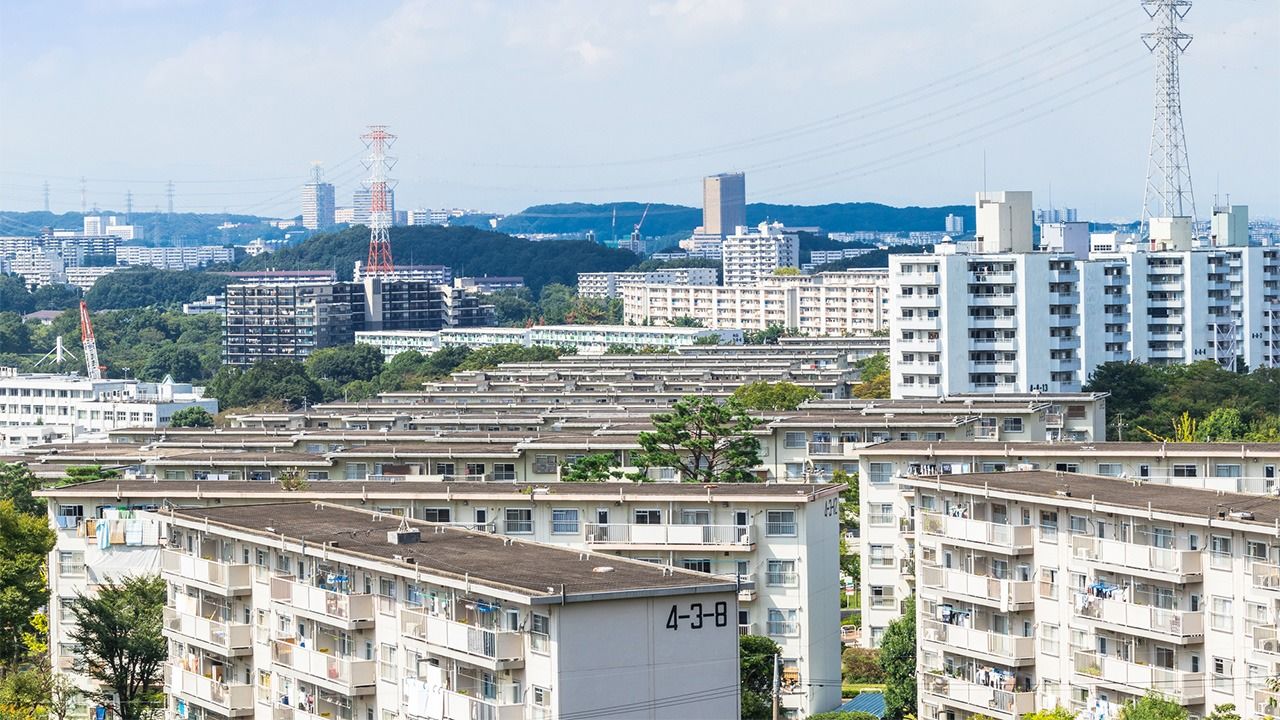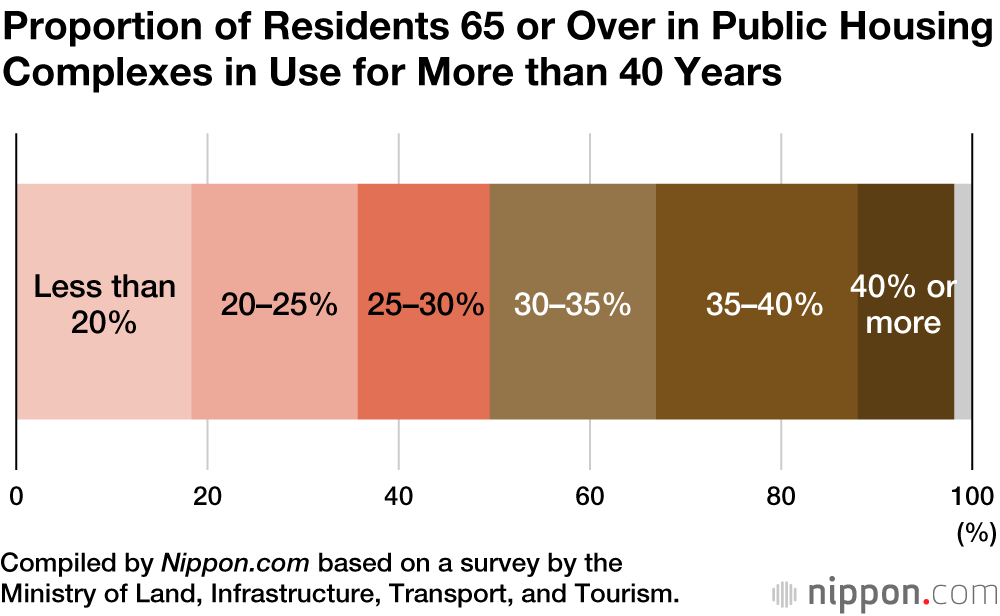
The Aging of Japan’s “New Town” Public Housing Complexes
Society Family- English
- 日本語
- 简体字
- 繁體字
- Français
- Español
- العربية
- Русский
A survey by the Ministry of Land, Infrastructure, Transport, and Tourism found that 22.2% of all Japanese public housing complexes (danchi) have been in use for more than 40 years. The number may be higher given that the age of almost half of these buildings is unclear. What is more, residents aged 65 or older account for more than 30% of those living in these crumbling housing complexes, which is significantly more than the 26.6% proportion of seniors in the total population.
To accommodate the population surge in the major metropolitan areas that accompanied Japan’s postwar economic growth, the national government promoted the construction of large public housing complexes referred to as new towns. The first was Senri New Town, straddling the cities of Toyonaka and Suita in Osaka Prefecture, which was built in the 1960s. This was followed in the 1970s by Tama New Town in the Tama and Machida areas of western Tokyo, and then in the 1980s, Kōhoku New Town in Yokohama. Unfortunately, the residents of these large complexes all moved in around the same time and now remain as an aging and dwindling cohort left behind by the children who have grown up and moved out.
The aging populations in Japan’s public housing complexes have led to increasing incidences of empty units and lonely deaths of single elderly people. Another phenomenon is the emergence of “shopping refugees,” elderly residents on the upper floors of the high-rise complexes who are too frail to make their way out of their units to take care of such daily activities as shopping. These trends have led to a general decline in community vigor throughout the now not-so-new towns.
The government has set numerical goals in its Basic Housing Plan, and is aiming to breathe new life into the complexes through rebuilding projects that will incorporate support facilities for the elderly, disabled, and young families with children, and by creating medical and welfare centers within complexes managed by the Urban Renaissance Agency.
(Translated from Japanese. Banner photo © Pixta.)

